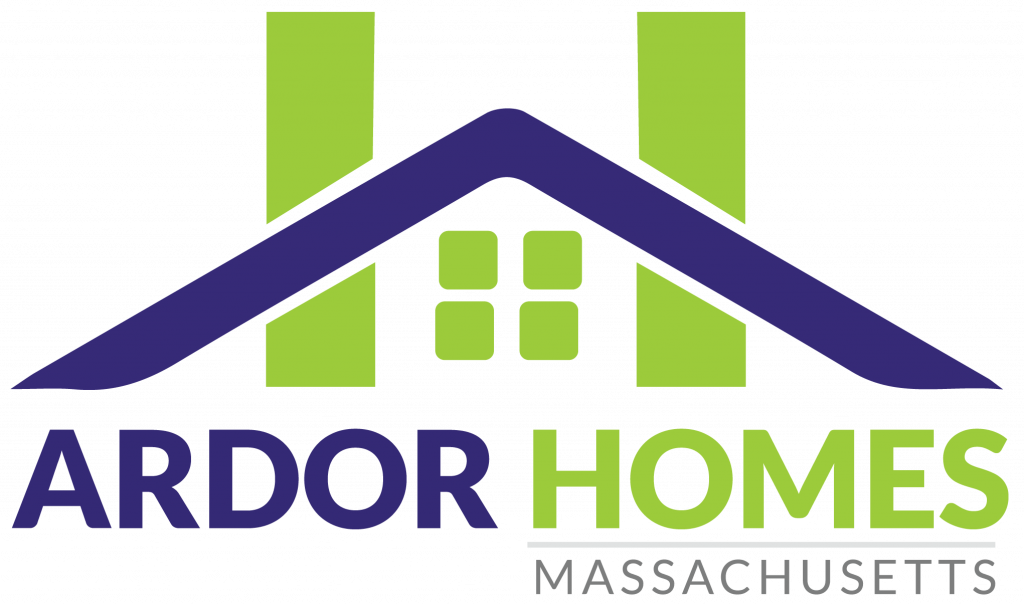The idea of investing in a real estate property without having cash reserves isn’t new, but it’s becoming more popular now that investors can access many investment property loans.
Due to the real estate market’s recent upswing, many people are looking at ways to take advantage by purchasing properties with funds from other sources besides conventional loans, like life insurance policies and peer-to-peer lending.
This article will outline some of the most common ways to get a loan for an investment property, basic investment loan requirements, and tips for getting a home investment loan.
So whether you’re a first-time investor or someone who’s been investing for years, read on for tips on how to build your real estate investment portfolio!
What’s an investment property?
Real estate investors know that purchasing an investment property can be a great way to secure additional income and build equity over time. However, many people are unsure of what an investment property is.
An investment property is any piece of real estate purchased with the intent of generating a return on investment, such as rental properties, office buildings, or even warehouses. So if you’re considering buying an investment property, it’s important to understand the different financing options available.
Differences Between Investment Properties and Second Homes
While considering real estate investment loans, it’s best to differentiate between second homes and investment properties and the various mortgage interest rates for the property types. The difference between second homes and investment properties is that while it’s compulsory to live in a second home for a certain period, you don’t have to stay in an investment property.
Vacation homes or second homes can be investment properties if you plan on renting them out for some time. However, you might want to talk to your lender about this, as lender policies differ regarding using a vacation home or a second home as an investment property.
For instance, Fannie Mae allows investors to rent out their second homes if they occupy them for a specified period each year, don’t rely on expected rental income during the application, and retain property control.
If you intend to use a vacation home as an investment property, lenders will expect it’s located away from your primary residence and probably in a tourist area.
Investment Properties Special Mortgage Rules
One benefit of investment property purchase is the freedom to include your expected rental income with your current income while applying. That way, you can show that you can comfortably pay your new mortgage.
However, your lender might not be swayed by the extra income or even take your word for the amount. Most lenders allow 75% of the expected rental income when qualifying your income. They often require a rental schedule or current lease agreement after an appraisal based on similar rental properties on local comparisons.
You’ll need the extra qualifying income, considering that lenders want to ensure you can afford monthly payments on any existing mortgage and your new loan.
Therefore, while budgeting, remember that investment properties offer more generous tax breaks compared to owner-occupied ones. You might want to talk to a professional advisor to know what the rules are for you.
Investment Property Loan Rates
Mortgage lenders understand that investment property loans carry more risks than owner-occupied home loans because if an investment property opener has financial trouble, they’ll likely pay their primary mortgage than their investment property loan.
Therefore, lenders often charge higher interest rates for investment property loan options than conventional mortgages and set higher qualification barriers. Investment property loan rates are usually between 0.50 to 0.875% higher.
The rate might vary from one lender to another depending on your debt-to-income ratio, cash reserves, credit score, and down payment. However, with a 25% down payment, you’ll get the best interest rate.
Tips for Financing Investment Properties
-
Have a High Credit Score
Factors like lender’s policies and loan-to-value ratio can influence an investment property loan’s term. You might start by checking your credit score before applying for a loan.
Consider ensuring a 740 credit score seeing as any score below that might lead to a higher interest rate. Additionally, you’ll need reserves in a financial institution to pay your investment-related and personal expenses for a minimum of six months.
Presently, lenders request reserves for every property for owners of multiple rental properties applying for loans.
-
Drop a Higher Down Payment
Mortgage insurance doesn’t cover investment properties, so you’ll need to put a minimum of 20% down payment to get conventional financing from lenders. Getting the down payment to 25% will ensure a better interest rate.
A higher down payment provides the financial institutions and lenders security for when the investment fails.
-
Get Professional Advice From a Broker or Local Bank
If you don’t have a high down payment, it’d be best to go for a small neighborhood bank instead of a popular financial institution.
Besides knowing the local market better, they tend to be more interested in investing locally. You can go for mortgage brokers due to their various loan products. However, ensure you do extensive research before going with one.
-
Use Your Home Equity
An investor whose investment property or primary residence has gathered a reasonable amount of equity can use it to finance another investment property through the following ways:
1. Cash-out Refinance
With this option, you get to cash out your current mortgage and replace it with a bigger loan while you receive the difference between the new and old mortgage in cash.
That cash will come in handy for financing an investment property. A refinance will help you get a shorter repayment term or lower interest rate than you currently have.
2. HELOC
The home equity line of credit (HELOC) is one way to tap your home equity. However, you only get to draw the needed sum rather than take the entire equity as a lump sum.
HELOCs have lower but variable interest rates. Therefore, you might have to pay a higher HELOC interest rate in the future.
3. Home Equity Loan
A home equity loan is another option to leverage your home equity. Because your property’s equity secures them, the interest rates are often low, and repayments can take up to 30 years. Borrowers with high credit scores can enjoy lower interest rates with home equity loans.
Other Property Investment Financing Options
Besides tapping your home equity, other investment property financing options exist, such as:
1. Margin Loans
This line of credit is backed by your investments and used to finance a property. Margin loans are used as short-term funding tools and come with some risks, including amplified loss if the borrower’s investment portfolio’s value declines and margin calls.
2. Peer-to-peer Lending
With its increasing popularity, the peer-to-peer lending option has become a way for investors and borrowers needing finance to connect. These investors see peer-to-peer lending as a type of alternative investment. The interest rates and fees are generally low depending on the borrower’s creditworthiness.
3. Life Insurance Policies
Depending on your life insurance policy, some lenders might accept it as a liquid asset. For instance, permanent life insurance policies enable you to access loans easily, and you can borrow against them to finance a new investment property.
4. Fix-and-flip Loans
As its name implies, fix-and-flip mortgages are short-term loans for house flippers with about 12% to 18% interest rates. If you’re a house flipper and saw a property you can fix and sell within 12 to 18 months, fix-and-flip loans might be your best bet.
5. Personal Loans
Although convenient, these loan types come with high-interest rates and shouldn’t be your first option when searching for investment property financing. However, personal loans offer quick funding.
Investment Property Loans Minimum Requirements
Seeing as lenders view investment property lending as a risky venture compared to primary residence loans, the rules for qualifying for investment property loan programs require showing more financial stability in the following ways:
-
High Credit Score Requirements
You need a 640 minimum credit score to access an investment property mortgage. The lenders might require a 700 score or higher if you’re purchasing a multi-family property.
-
Reserves
Mortgage reserves or reserves for short are monthly payments the lender would want to see in your bank account before approving an investment property mortgage. The amount is often about two to six months, equivalent to mortgage payments. However, it depends on the number of properties you have.
-
Larger Down Payments
Although conventional loan guidelines allow a 15% down payment for rental properties, most lenders insist on a 20% down payment or higher. Unless you’re considering a multi-family home purchase with government-backed mortgages like an FHA or VA loan. In that case, your down payment can be as small as 3.5%; however, you must live in one unit and rent out the rest.
While you can use gifts for a down payment for FHA and VA multi-family home purchases, down payment gifts aren’t acceptable for buying rental homes with a conventional mortgage.
-
Use Rental Income to Qualify
Most lenders will allow you to include the estimated or actual rental income from the property you’re buying to become eligible for a loan. For instance, the Fannie Mae guidelines count rents from the other units you’ll rent as part of your qualifying gross monthly income.
-
Rental Income Proof
The mortgage lender might require tax returns, a rent roll history, and a current lease as proof of rent payments. Often, the appraisal will include an analysis confirming the rent of similar properties in the neighborhood.
Steps to Getting an Investment Property Loan
The following are vital steps to help you get an investment property loan:
1. Find a Great Investment Property Lender
Although there are lots of investment property loans, their rates vary significantly depending on the mortgage lender. If you can’t find a non-qualifying mortgage, consider going for hard money loans, although they come with higher interest rates.
If you’ve been referred to a real estate agent, consider asking for professional advice on finding hard money lenders.
2. Fill out the Loan Application
The process of applying for conventional loans like the VA or FHA loan is similar to a standard loan program. However, hard money and non-qualified mortgage lenders might have their own application process.
3. Provide Asset Documentations
You’ll need to provide a minimum of two months’ bank statements and the property’s rental information or current leases. Most lenders accept a percentage of your 401(k) vesting or retirement as part of your reserve requirement; therefore, make the recent statement available.
4. Get an Investment Appraisal
Hire a home appraiser to check the home value, including the average rent of similar properties in the area. Most lenders also require the borrower to generate rental income reports from the appraisal to help qualify for an investment property mortgage.
5. Review Your Closing Disclosure
After meeting your loan conditions, including the appraisal, your lender will issue you a closing disclosure. This disclosure often comes three days before closing. You might want to review the figures to ensure they’re as expected, especially if it’s a hard money loan.
Check the “guaranteed interest” language or prepayment penalties. Hard money lenders are interested in making a specific amount of interest even if you pay off the loan faster.
6. Get Your Funds and Close
At this stage, you’ll need to bring a cashier’s check or send a wire for your closing costs. Your loan funds will be sent and the property documented in your name after signing the mortgage closing paperwork and other necessary contracts with the seller.
FAQ
Can I Drop a Three Percent Down Payment on an Investment Property?
While you can’t put down three percent for a down payment on “real” investment property, with Freddie Mac and Fannie Mae, you can buy a multi-family building with three percent if you’ll live in one unit and rent the rest out.
That way, you can own an investment property and generate rental income from the other units you rented.
Can I Live in a Real Estate Investment Property?
While you can live in a multi-family property for a specified period and rent the other units, the property owner doesn’t reside in a “real” investment property.
A multi-family home purchase is one of the fastest ways to earn from an investment property.
Must I Drop a 20% Down Payment on an Investment Property?
The percentage of down payment you need depends on the mortgage type you want and your lender’s rules. Usually, 15% is acceptable for a conventional loan. However, you can drop 3.5% for FHA loans where you can live in one unit, zero percent for VA loans, and three percent for conforming loans.
Some lenders don’t consider multi-family buildings as “real” investment properties.
Can I Purchase an Investment Property With My 401(k)?
Most financial experts advise against using your retirement funds for investing due to the risk. It’s best to purchase your investment property with the equity from your existing home through a second mortgage and cash-out refinance.
Wrapping Up
If you’re looking for how to get a loan for a rental property, it’s important to know the different types of loans available to property investors. By understanding your options and what is required to access each type of loan, you can decide which loan is best for your needs.
Don’t forget that most lenders will require a high credit score and a solid financial history before they approve an investment property loan, so be sure to start preparing well in advance if you want to take this route. Another option for buying a new investment property is tapping your home equity.
Talk to your lender about whether this is a possibility for you, and get started on the process today.
Now that you’ve learned how to apply for an investment property loan, it’s time to start searching for a great property to buy. Due to the complexities of purchasing investment properties, it’d be best to work with an experienced real estate agent.
At Ardor Homes Massachusetts, our licensed and knowledgeable team of real estate agents are available to offer you a quick and stress-free house hunting process. Contact us today to get started with meeting your real estate needs.

In her 25-year career, Steph Wilkinson has been involved in the acquisition, marketing and sales of over $3 Billion dollars of residential real estate. A number of years ago, Steph transitioned into Brokerage Leadership for National real estate brands and tech start-ups. She has served as a Business Strategist for real estate agents and brokerages alike and is also a real estate coach and trainer. In her new role with the Iconic Team, Steph will be responsible for the growth of the team and will be working with all of our agents to increase their productivity and bottom line.




